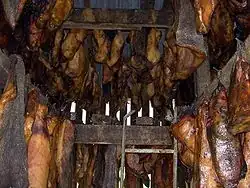Today my brother-in-law told me that he's going to Iceland for vacation. He also told me that one of the delicacies in Iceland is aged/rotten Greenland Shark.
This then brought up a curious question for me and I think this forum is the perfect place for it...
What are some other foods that are essentially allowed to rot or go bad that some cultures call food. If you can name it and maybe give some background about it, describe the taste/texture and maybe how it is used that would be great.
I'm turning this in to a wiki. So please put one food per answer. This way, people can add to and/or comment on each food. I will add the Icelandic delicacy of the rotten shark as an answer below...

